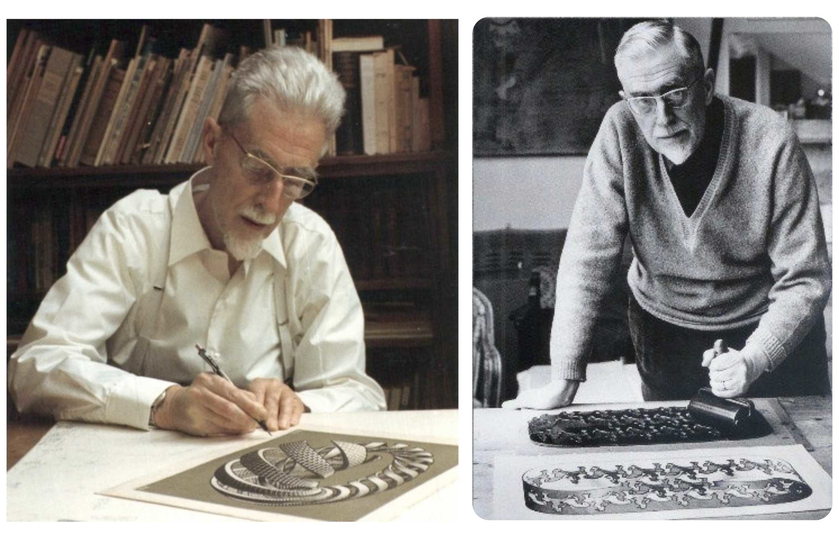If you want to understand music theory, study the works of M.C. Escher.
Escher is the greatest graphic artist of all time. (In my opinion anyway.) He lived from 1898 to 1972 in the Netherlands and was, for lack of a better word, amazing.
But the thing is ... he wasn't even a musician. Not really. He dabbled with the piano. He practiced the cello a bit (but didn't excel due to having small hands), and even tried the flute (despite his thin lips). Yet he always loved music and was an avid fan, listening to records of Bach for hours on end as he crafted his art.
And wow, his art. It was good -- like unbelievably good -- for at least 3 reasons:
1. Because it's mind-bending, with images that explore (and defy) the nature of space and time ... like these, for example:
 2. Because it's also true craftsmanship ... since Escher didn't use a computer to produce his prolific output. Instead, he created these surreal images by hand as woodcuts, lithographs, and mezzotints.
2. Because it's also true craftsmanship ... since Escher didn't use a computer to produce his prolific output. Instead, he created these surreal images by hand as woodcuts, lithographs, and mezzotints.

3. But the reason Escher's art is especially inspiring is because of the way it provides insight into the nature of music theory. For real. Let me explain....
Back in the day, when I was first wandering into the thorny underbrush of music theory -- venturing into its dense thicket of musical symbols and arcane rules -- it all felt overwhelming.
Frustratingly so, since music itself has always sounded so simple and intuitive.
But in the process of exploring various musical relationships, studying scales and chords and notes and intervals, one thing became evident: Music is just patterns. Clear and predictable patterns. Repetitive, logical, and simple patterns that all began to hint at an underlying framework of natural beauty.
And while pondering this nature of music, walking through the hills staring at an early diagram of note patterns, a lovely thought arrived -- which was that the diagram I'd printed (a rudimentary dissection of the guitar fretboard) looked an awful lot like one of Escher's woodcuts ... the tessellation called "Sky and Water I" from 1938:
 And with this realization, that there's a kind of order to music -- an order and structure that can be graphically depicted, explored, and mastered -- I immediately became obsessed with charting this unseen musical territory.
And with this realization, that there's a kind of order to music -- an order and structure that can be graphically depicted, explored, and mastered -- I immediately became obsessed with charting this unseen musical territory.
In that moment, it suddenly became possible to see sound, to pick it apart and reassemble it using its own natural patterns. To discover (and truly understand) the order of music within the chaos of sound. And to see that music is the audible convergence of space and time.
In fact, it's surprising that it took 200 posts to finally mention M.C. Escher here (!). Because his art and perspective directly (and indirectly) inspires many of the diagrams you'll find here in the community.
To show you what I mean, the following are a few examples. And I highly recommend exploring all of his works -- because they'll help you find further connections -- drawing more inspriation in this journey of discovery we're on:
























